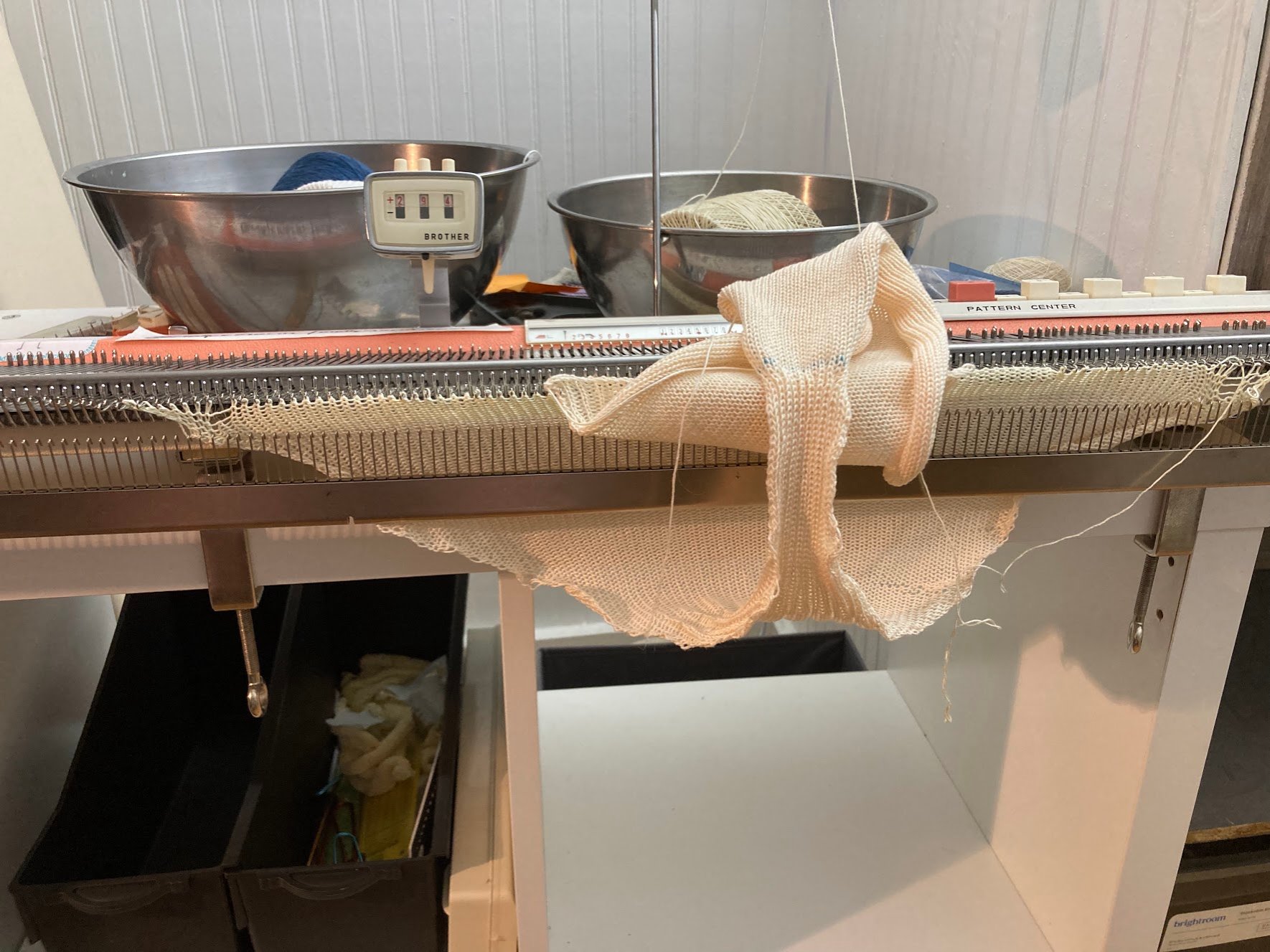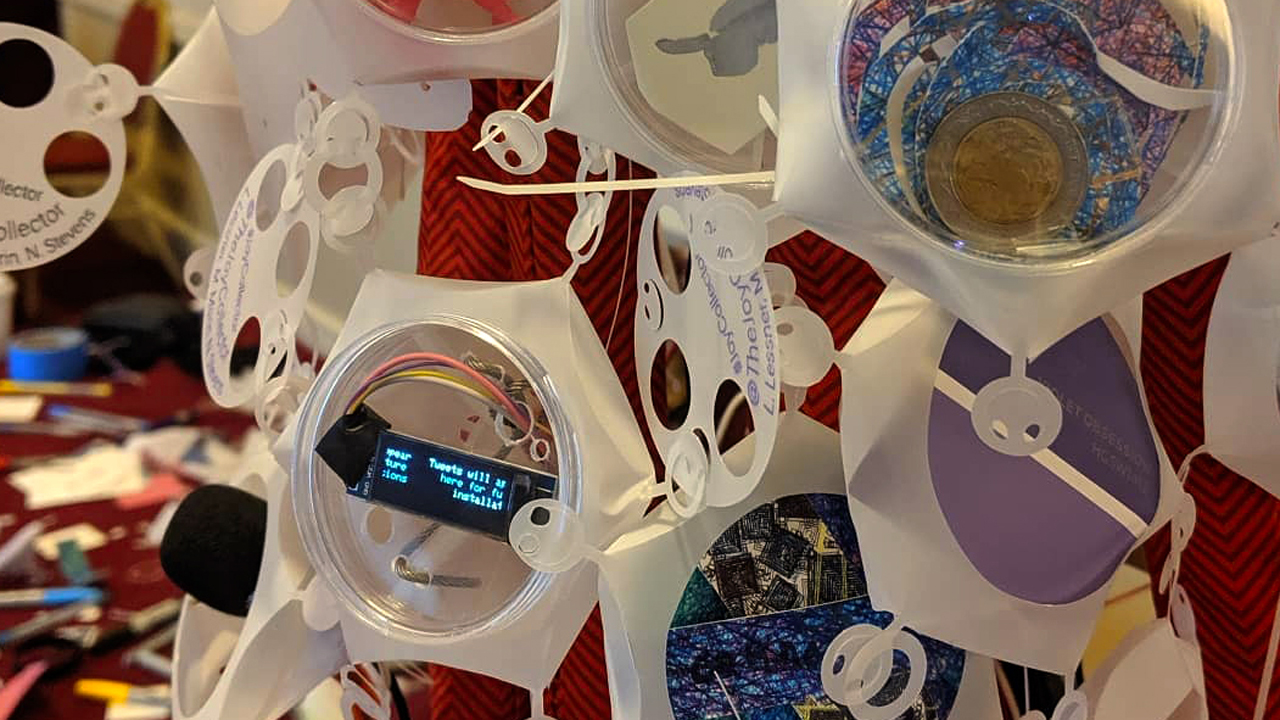Peripatetic Knitting

As I continue to make my own work and study knitting histories, I am happy to find threads that connect knitting, historically and philosophically, to issues beyond high/low, art/craft debates, third wave (white) feminist frameworks, and other (binary) gendered concerns. Sandy Black’s long historical overview Knitting: Fashion, Industry, Craft offers many new avenues in to thinking about knitting. I appreciate Black’s engagement with technological, economic, social and political elements of the history of knitting, and many items from this book have been generative to my thinking recently. One of these is her mention of the Shetland knitters who would knit while walking in the course of their regular work to bring in extra income.
Before the Industrial Revolution people in many communities knit garments in between and around their other work for supplemental income. (p51) I’m struck by the idea that an activity which, for many of us, is a creative outlet and relaxation activity was once a pre-industrial side hustle for subsistence farmers and fishers. The book includes a photograph and description of a Shetland woman carrying a full load of peat for fuel on her back, knitting as she walks home. I’m totally captivated by these images and the knitters’ capacity to do relatively fine knitting while carrying a heavy load over uneven ground.
The knitters in these images were laborers, working poor layering work over their existing work of farming, fishing and maintaining homesteads to stay afloat. These knitters traded their products in an exploitative “truck system” exchanging work for goods from the town store rather than cash. I am reminded of the company store and the contemporary gig economy here, and thinking of the connection of art and craft to labor, and I am looking forward to exploring this more thoroughly.
As an experiment, I am working on my way to work, knitting while walking the 15 minutes from the parking lot to the lab (and back) every day. I was surprised to find I was able to keep my eyes off my knitting enough to navigate sidewalks and maneuver around other pedestrians.

The Shetland knitter’s sort of portable, on-the move making also reminded me of textile artist LJ Roberts In their discussion of the project Carry You With Me: Ten Years of Portraits, Roberts writes: “Much of the embroidery is done in transit, typically on the subway, outside of traditional studio environments. One of the central tenants of my practice is the belief that working in textiles mirrors the flexibility and resilience that often permeates queer and trans survival and thriving.” While Roberts’ context and products are different in many important ways, both practices engage with survival and adaptation. I appreciate the way that they connect their practice with resilience and thriving through their own ingenuity and adaptability.
In my studio, I am making machine-knit underwear. In this work, I am thinking about knitting as a functional subsistence activity, providing goods for warmth and income rather than fashion or self-expression, along with Dr. Gustav Jaeger’s late 19th century philosophy that sanitary clothing should be made from animal fibers (also from Black’s book, more in a future post). For now, my designs are only very early prototypes, but I am encouraged by the awkward, non-elastic, utilitarian-looking forms that are emerging. Working off of my own mass-market underwear to make patterns, and working toward garments that will fit my own body this project feels stuttering and intimate to me, generating another quite visceral relationship to my own work.












